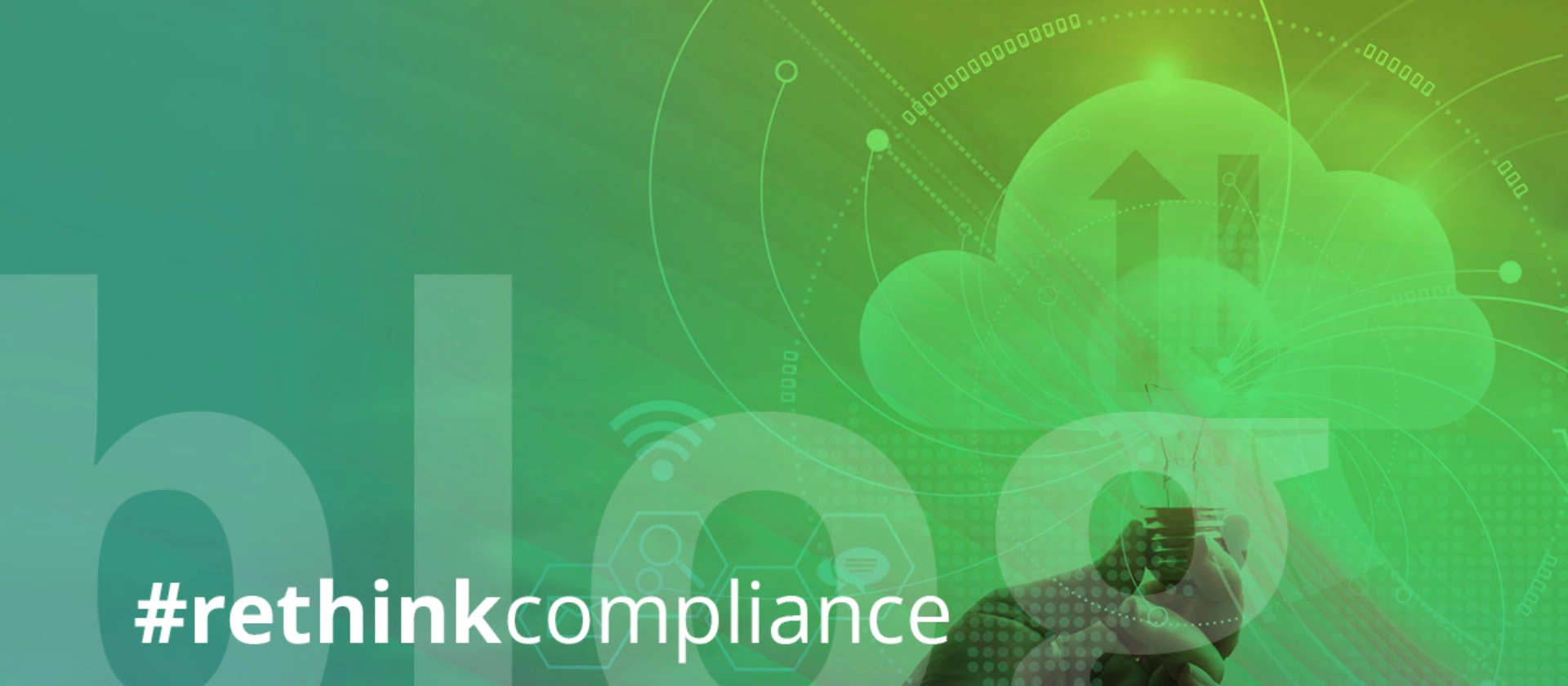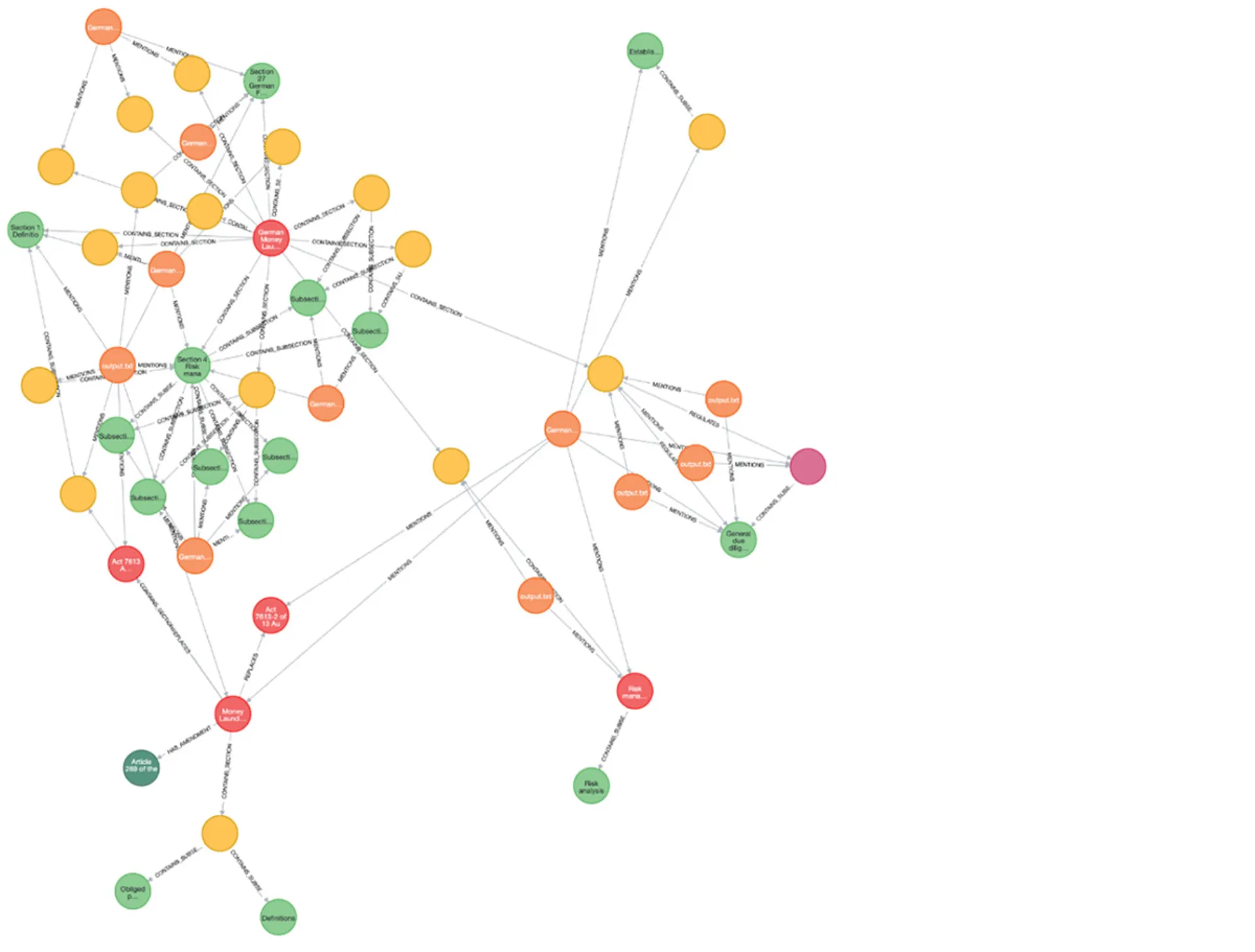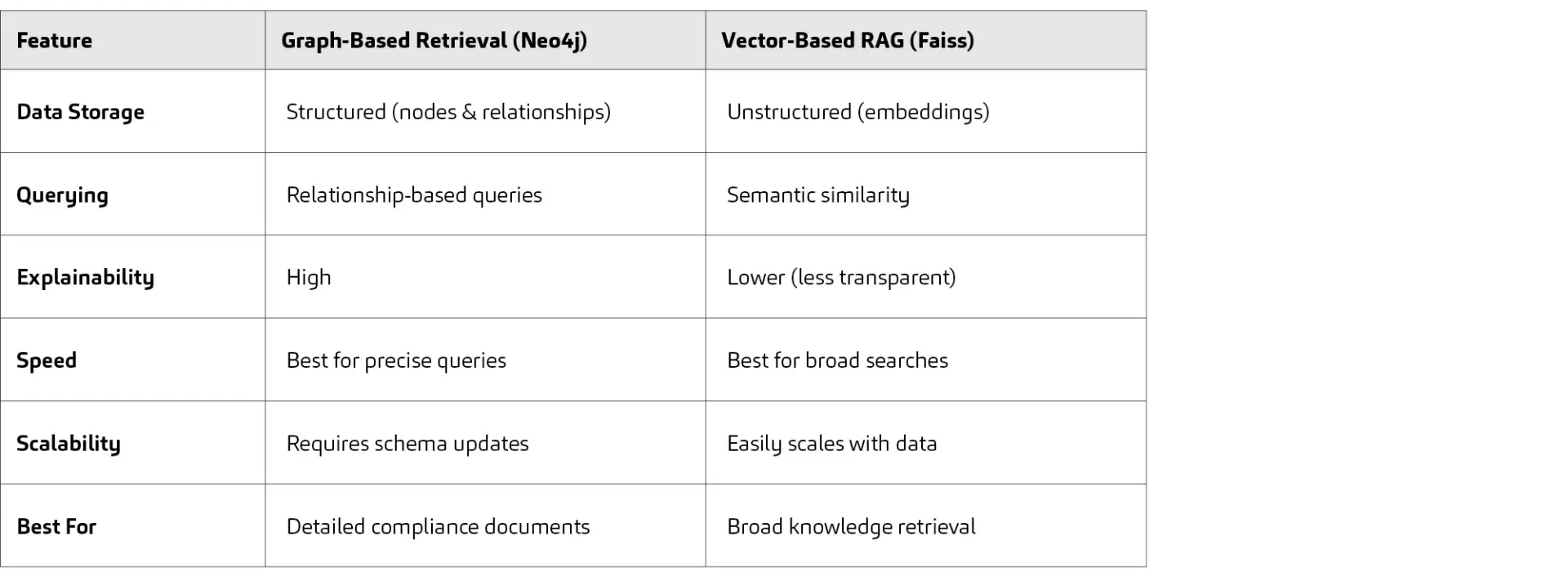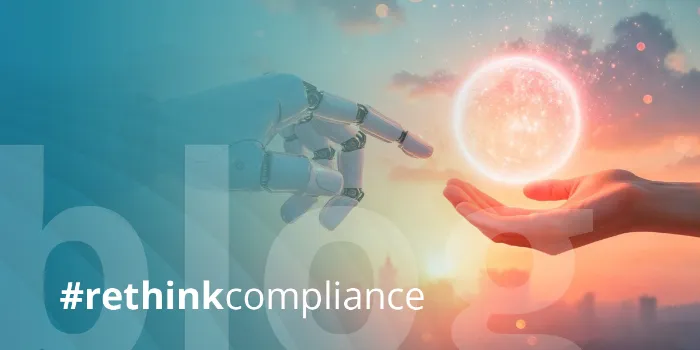

Graph-Based Retrieval vs. Vector-Based RAG: Choosing the Right Approach for Intelligent Regulatory & Compliance Document Analysis
#rethinkcompliance Blog | Beitrag vom 18.06.2025
In this article we will continue (see our previous article) exploring intelligent document analysis by using two popular approaches, RAG Graph Databases (using Neo4j) and Vector-Based RAG (using Faiss). We will provide pros and cons of each specific method and comment on a use case.
Organisations often struggle to extract accurate, actionable regulatory insights from dense technical compliance documents such as the AML Directives. One example of this is the German Anti-Money Laundering Act (AML/GWG). We can enhance this process using intelligent document analysis and AI. Selecting the right analysis method can significantly impact the accuracy, efficiency, effectiveness and quality of our AI tool’s output. Let's start discussing the two different approaches mentioned above.
Understanding the Approaches
Graph-Based Retrieval (Neo4j)
Graph databases like Neo4j store information as nodes (entities) connected by relationships, forming a structured knowledge graph (a.k.a. Graph DB). In regulatory compliance, entities could represent laws, sections, amendments, authorities and etc, while relationships explicitly connect these entities. This clear structure allows precise queries and easy navigation through hierarchical legal documents.
- Strengths: High clarity and explainability due to explicit relationships.
- Best suited for: Regulatory documents, compliance tracking, and clear entity relationships.

Vector-Based Retrieval (Faiss)
Vector-Based RAG translates text into numerical embeddings that capture semantic meaning. Faiss (to learn more about Faiss see our full article here link) uses these embeddings to rapidly find text sections contextually related to queries without predefined structures. This method excels in retrieving relevant content from extensive, unstructured documents by semantic similarity.
- Strengths: Efficient handling of large-scale documents and semantic search.
- Best suited for: General knowledge retrieval, dynamic Q&A, and large-scale document analysis.
Comparison of the Two Solutions

This comparison outlines the key differences between two data retrieval approaches: Graph-Based Retrieval using Neo4j and Vector-Based Retrieval using Faiss, often applied in Retrieval-Augmented Generation (RAG) systems.
1. Data Storage
-
Graph-Based (Neo4j): Uses a structured format consisting of nodes and relationships to represent data explicitly.
-
Vector-Based (Faiss): Relies on unstructured data represented through embeddings (mathematical vectors), without explicit relationships.
2. Querying
-
Graph-Based: Supports relationship-based queries that trace connections between entities, making it suitable for complex structured queries.
-
Vector-Based: Uses semantic similarity to retrieve information, identifying related content based on meaning rather than structure.
3. Explainability
-
Graph-Based: Offers high explainability because the reasoning path (through nodes and edges) is transparent and traceable.
-
Vector-Based: Has lower explainability, as retrieval is based on mathematical similarity in vector space, which is less interpretable.
4. Speed
-
Graph-Based: Optimized for precise and targeted queries.
-
Vector-Based: More suitable for broad, exploratory searches across large datasets.
5. Scalability
-
Graph-Based: Scaling can require updates to the underlying schema and relationships.
-
Vector-Based: Easily scales with growing data volumes and does not depend on schema structure.
6. Best For
-
Graph-Based: Ideal for detailed and structured documents, such as compliance reports or knowledge graphs.
-
Vector-Based: Better suited for general knowledge retrieval and scenarios where meaning is more important than structure.
Practical Insights from AML Analysis
When we tested our routines with the German Money Laundering Act, each method demonstrated specific strengths:
- Compliance obligations: Graph-Based Retrieval provided structured clarity on compliance requirements. Vector-based retrieval highlighted detailed practical steps and international considerations.
- Penalty information: Vector-Based RAG excelled in retrieving explicit details on penalties, amounts, and enforcement specifics.
- Transparency obligations: Vector-Based Retrieval offered more nuanced and detailed explanations about obligations, reporting processes, and legal structures.
Recommendations for Choosing Your Approach
- Graph-Based Retrieval is optimal if clear, hierarchical regulatory structures and explicit relational clarity are crucial.
- Vector-Based RAG is preferable when rapid retrieval, specific penalty details, and comprehensive procedural insights are critical.
Final Thoughts
Both methods offer significant benefits and can be used complimentary to each other. Vector-Based RAG stands out for its detailed and actionable insights, making it particularly useful for regulatory and compliance scenarios demanding precision and immediate applicability. Graph-Based Retrieval remains a powerful complementary tool, especially valuable for understanding internal compliance structures.
For more details and a technical deep dive take a look at our Instruction Guide: The choice between RAG and Graph DB for Compliance AI
Interested in exploring further? Contact us at msg Rethink Compliance to discover the right solution for your (Anti-Financial Crime) compliance processes.
Autor

Stylianos Nikas, PhD
Lead Consultant AI Expert / Data Scientist
KI- & ML-Experte | Intelligente Dokumentenanalyse und Text Mining mit Schwerpunkt auf Anwendungen im Compliance-Bereich | Lösungsarchitekt für KI-Anwendungen in AWS und Azure






